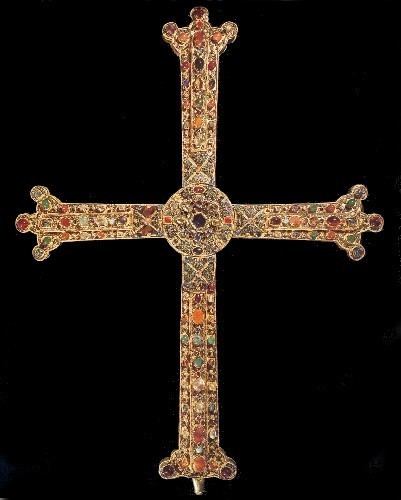 | ||
The coat of arms of Asturias is the official coat of arms of the principality of Asturias, an autonomous community within the kingdom of Spain. It was adopted as such on 27 April 1984.
Contents
The oldest attributed arms of the Principality of Asturias date from the 16th century, and show a quartered shield with the castle of the Kingdom of Castile, the lion of León and a goblet. But this Coat of Arms is wrongly attributed to the Prince and the Principality of Asturias, as proved Gaspar Melchor de Jovellanos, author, philosopher and main figure of the Age of Enlightenment in Spain. This Coat of Arms appeared in printed books and maps, even It was included in the Encyclopédie of Denis Diderot.
Description
The arms consist of a field of azure with the Victory Cross (Spanish: Cruz de la Victoria) of Or adorned by gemstones. The cross is the symbol of the re-conquest of Spain from the Moors. The cross was used, according to the legend or tradition, by the local governor, Pelagius of Asturias, in the initial battles against the Moors. It was assumed that the cross had brought victory, and it was later gold-plated. However, there is no historical evidence that Pelayo used exactly this same cross.
The Greek letters of alpha and omega are suspended from the left and right bars, respectively. The arms comprise a legend: "HOC SIGNO TVETVR PIVS - HOC SIGNO VINCITVR INIMICVS" (Lat. "This symbol brought victory over the enemy. This symbol protects the pious."), the former on the dexter and the latter on the sinister.
The arms are "ensigned of a Spanish Royal Crown".
Usage
In 1985 a simplified version of the shield was legislated for exclusive use in the Administration of the Principality.
The arms must appear de jure in:
One stays the existing shields in those declared buildings historical-artistic monuments. Also those that appear in those others that they form substantial part of the ornato and decoration.
The Shield of the Principality enjoys the same degree of protection as that of the other symbols of Spain.
